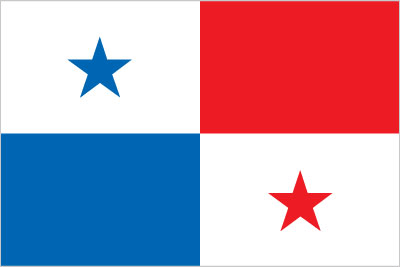Travelers officially need onward tickets before they are allowed to enter Panama. This requirement is not often checked at Tocumen International Airport, but travelers arriving by land should anticipate a need to show an onward ticket.
If you’re heading to Colombia, Venezuela or another South American country from Panama, you may need an onward or roundtrip ticket before you will be allowed entry into that country or even allowed to board the plane if you’re flying. A quick check with the appropriate embassy – easy to do via the internet – will tell you whether the country that you’re heading to has an onward-ticket requirement.
Passports, tourist cards & visas
Every visitor needs a valid passport and an onward ticket to enter Panama, but further requirements vary by nationality and change occasionally. Anyone planning a trip to Panama would be advised to check the internet to obtain the latest information on entry requirements. Ticketing agents of airlines that fly to Panama and tour operators that send groups there often can provide this information.
A valid passport is required to enter Panama, though additional requirements vary by country. Note that as of January 2007, US citizens can no longer enter Panama with just a driver’s license and a birth certificate.
A tourist card costs US$5, and it’s available at the airport or at border posts upon arrival. Most airlines serving Panama issue the tourist cards before you arrive, as do most buses arriving from Costa Rica.
No matter where you are coming from, you will generally be given a 90-day stamp in your passport when you enter Panama. This means you are allowed to remain in Panama for 90 days without having to obtain further permission from the authorities. After 90 days, visas and tourist cards can be extended at migración (immigration) offices.
Travelers entering Panama overland will probably be asked to show an onward ticket and a show of sufficient cash (US$500) or a credit card.
At the time of research, people holding passports from the following countries needed to show only their passports to enter Panama: Argentina, Austria, Belgium, Chile, Costa Rica, Denmark, Egypt, El Salvador, Finland, France, Germany, Greece, Guatemala, Holland, Honduras, Hungary, Israel, Italy, Luxembourg, Paraguay, Poland, Portugal, Northern Ireland, Scotland, Singapore, Spain, Switzerland, the UK, Uruguay and Wales.
People from the following countries need a passport and a tourist card: Antigua, Australia, Bahamas, Barbados, Belize, Bermuda, Bolivia, Brazil, Canada, Colombia, Granada, Guyana, Iceland, Ireland, Jamaica, Japan, Malta, Mexico, Monaco, New Zealand, Norway, Paraguay, San Marino, South Korea, Suriname, Sweden, Taiwan, Tobago, Trinidad, the USA and Venezuela.
Citizens from countries that do not appear on this list will need to obtain a visa, available at Panamanian embassies or consulates. Contact the one nearest you or call the immigration office (227 1448, 225 8925; fax 227 1227, 225 1641) in Panama City.
In the event that you lose your passport while in Panama, you’ll need proof of when you entered the country to be able to leave it. That proof, strangely enough, does not come from an immigration office but from the airline you flew in on. You need to go to the airline’s main office in Panama City and request a certification of your entry date (certificación de vuelo). There’s no charge, but you’ll likely be asked to come back the next day to pick it up. When you leave the country, along with your new passport (obtained from your embassy in Panama City), you’ll present your certificación de vuelo to an immigration agent.
Visa extensions
Visas and tourist cards are both good for 90 days. To extend your stay, you’ll have to go to an office of Migración y Naturalización in Panama City, David or Chitré. You must bring your passport and photocopies of the page with your personal information and of the stamp of your most recent entry to Panama. You must also bring two passport-size photos, an onward air or bus ticket and a letter to the director stating your reasons for wishing to extend your visit. You will have to fill out a prórroga de turista (tourist extension) and pay US$10. You will then be issued a plastic photo ID card. Go early in the day as the whole process takes about two hours.
If you have extended your time, you will also need to obtain a permiso de salida (permit) to leave the country. For this, bring your passport and a paz y salvo (a certificate stating you don’t owe any back taxes) to the immigration office. Paz y salvos are issued at Ministerios de Economia y Finanzas, found in towns with immigration offices, which simply require that you bring in your passport, fill out a form and pay US$1.
These documents can be obtained in Panama City or in David at the following locations:
Migración y Naturalización office (Immigration Office; Map pp76-7; 225 1373; Av Cuba & Calle 29 Este, La Exposición, Panama City; 8am-3pm Mon-Fri)
